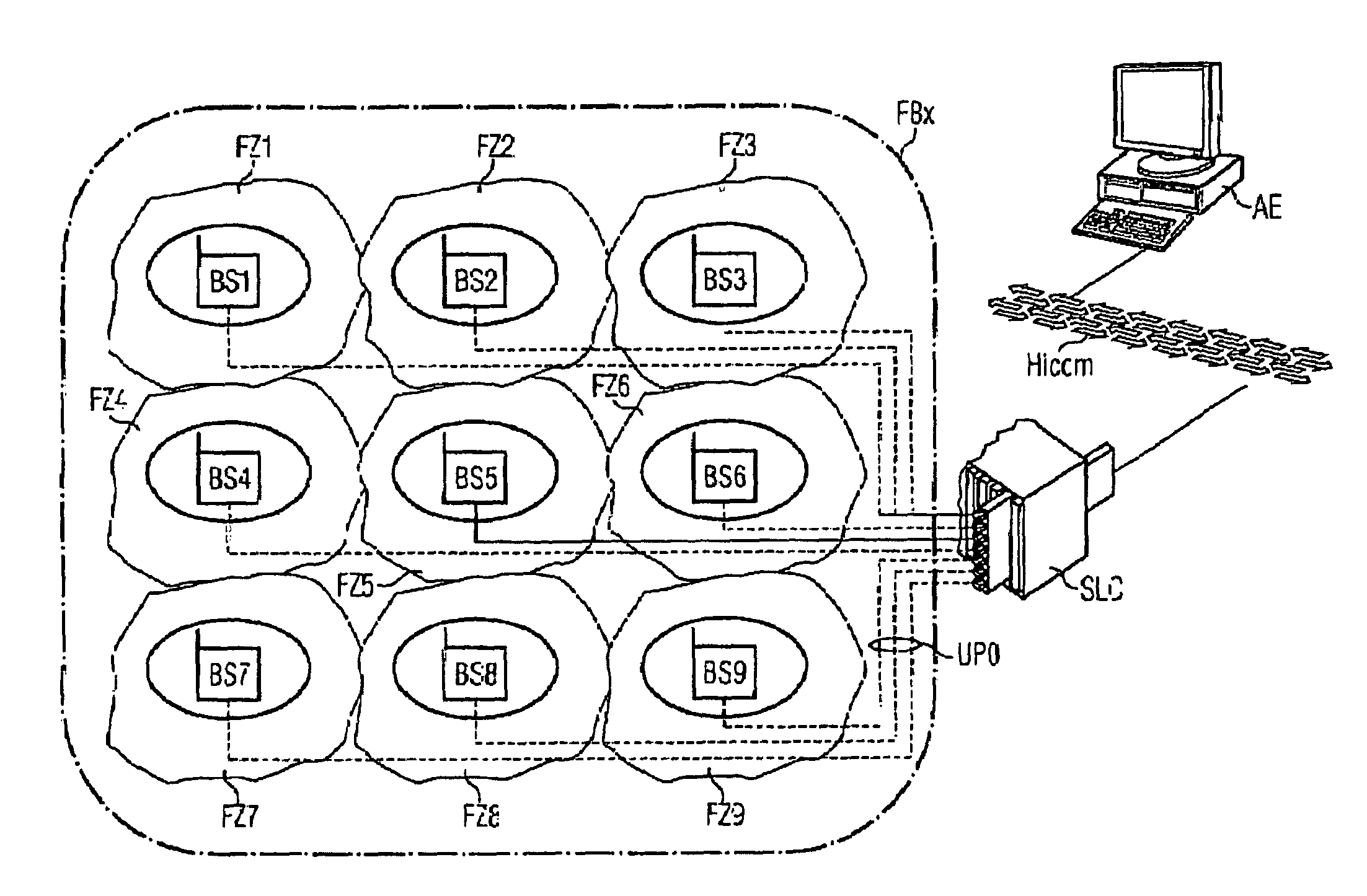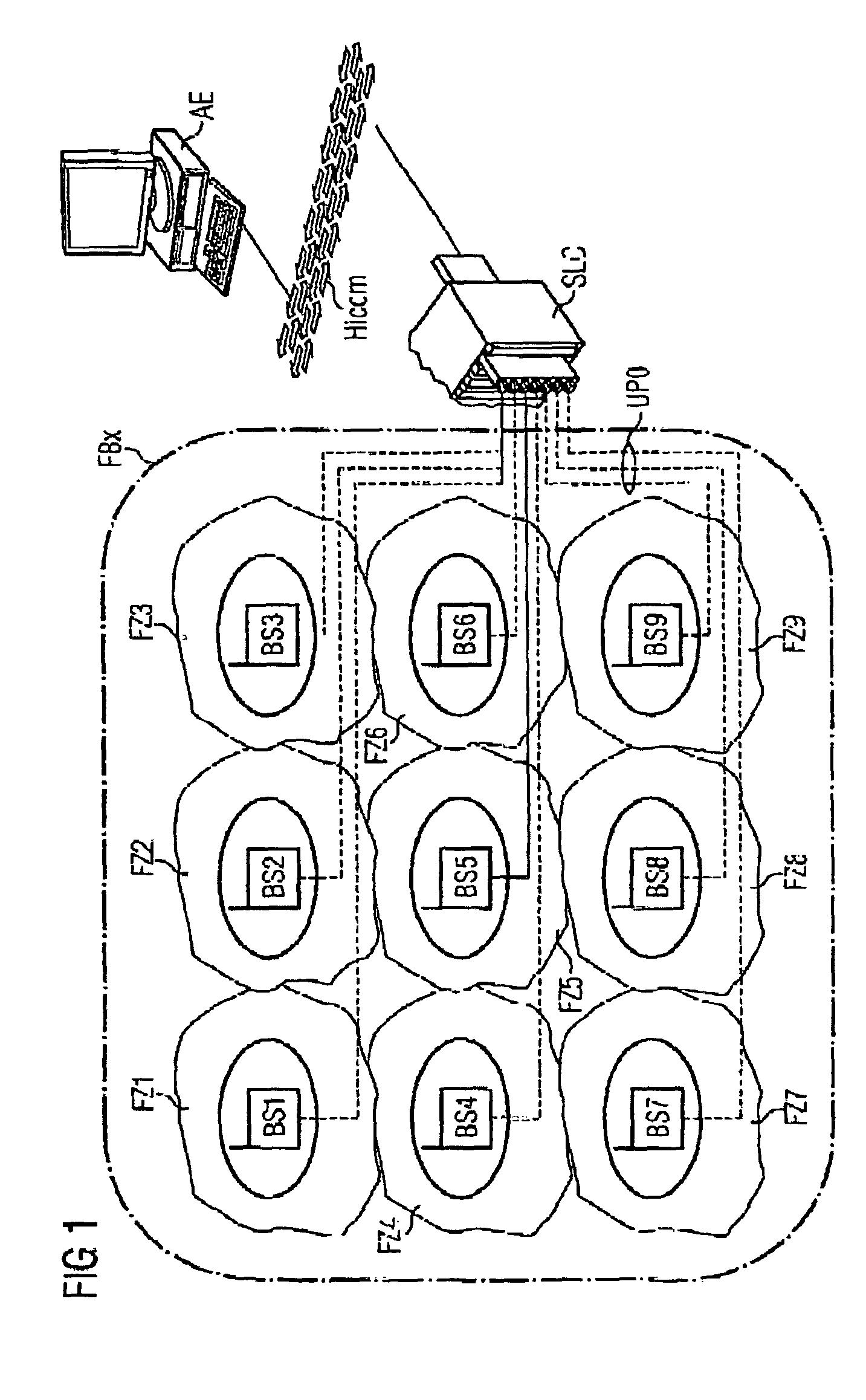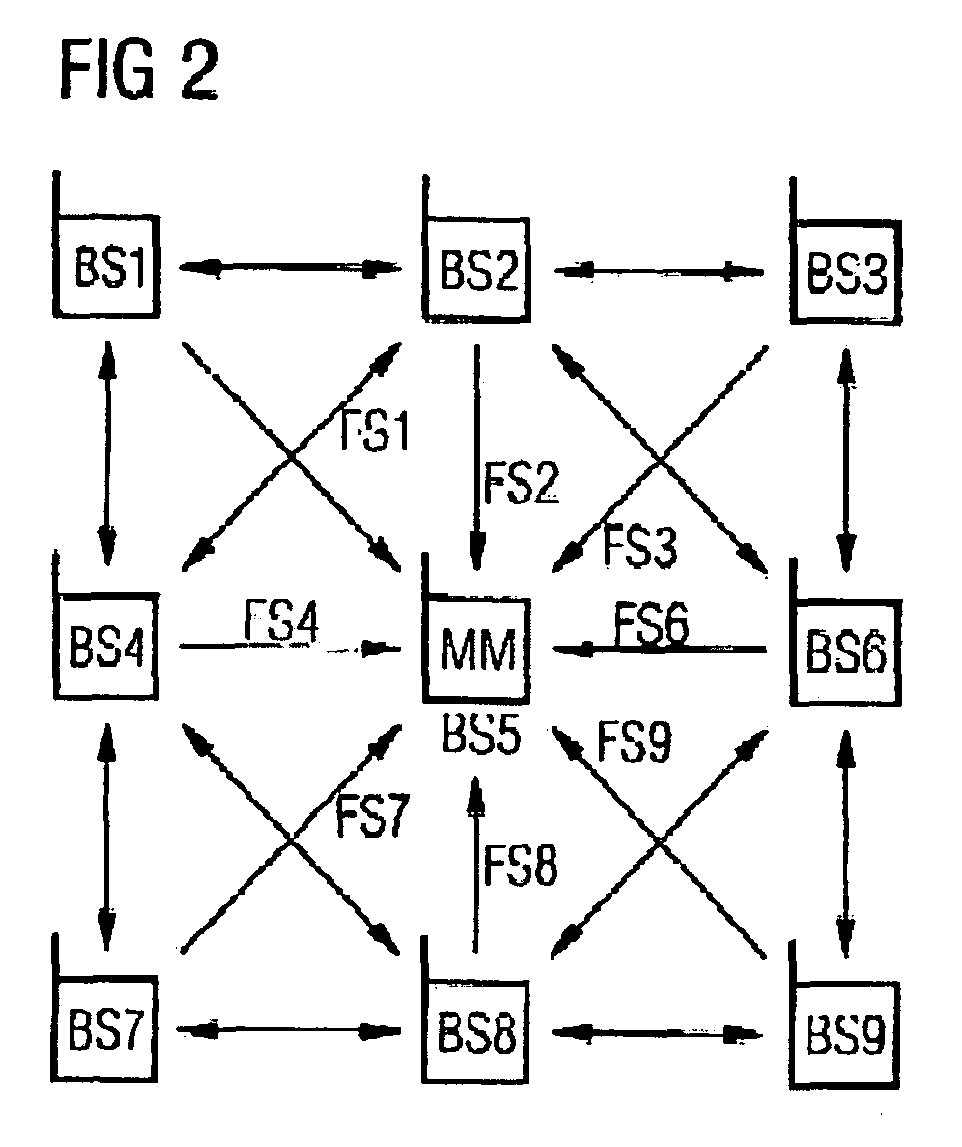Method and arrangement for detecting a radio coverage
a radio coverage and arrangement technology, applied in the field of methods and arrangements for detecting radio coverage, can solve problems such as extraordinarily high costs, and achieve the effect of cost-effectiveness
- Summary
- Abstract
- Description
- Claims
- Application Information
AI Technical Summary
Benefits of technology
Problems solved by technology
Method used
Image
Examples
Embodiment Construction
[0023]The invention will be described below with reference to a multicellular mobile radio system which is designed in accordance with the DECT (Digital Enhanced Cordless Telecommunications) standard.
[0024]FIG. 1 shows a simplified diagram of this type of DECT multicellular mobile radio system, with for example nine base stations BS to BS9 connected via a first communication interface UP0 to a Subscriber Line Card (SLC). The subscriber line card SLC can in its turn be connected via a second communication interface HICOM to an evaluation unit AE.
[0025]Each base station BS1 to BS9 is used for radio service provision to a predetermined geographical area, which is represented by a radio cell FZ1 to FZ9 in each case. The totality of the radio cells FZ1 to FZ9 represents a radio area FBx to which a subscriber line card SLC is assigned in each case. Within a subscriber line card SLC a maximum of 16 base stations can be connected for implementing a shared radio area. Furthermore there is th...
PUM
 Login to view more
Login to view more Abstract
Description
Claims
Application Information
 Login to view more
Login to view more - R&D Engineer
- R&D Manager
- IP Professional
- Industry Leading Data Capabilities
- Powerful AI technology
- Patent DNA Extraction
Browse by: Latest US Patents, China's latest patents, Technical Efficacy Thesaurus, Application Domain, Technology Topic.
© 2024 PatSnap. All rights reserved.Legal|Privacy policy|Modern Slavery Act Transparency Statement|Sitemap



